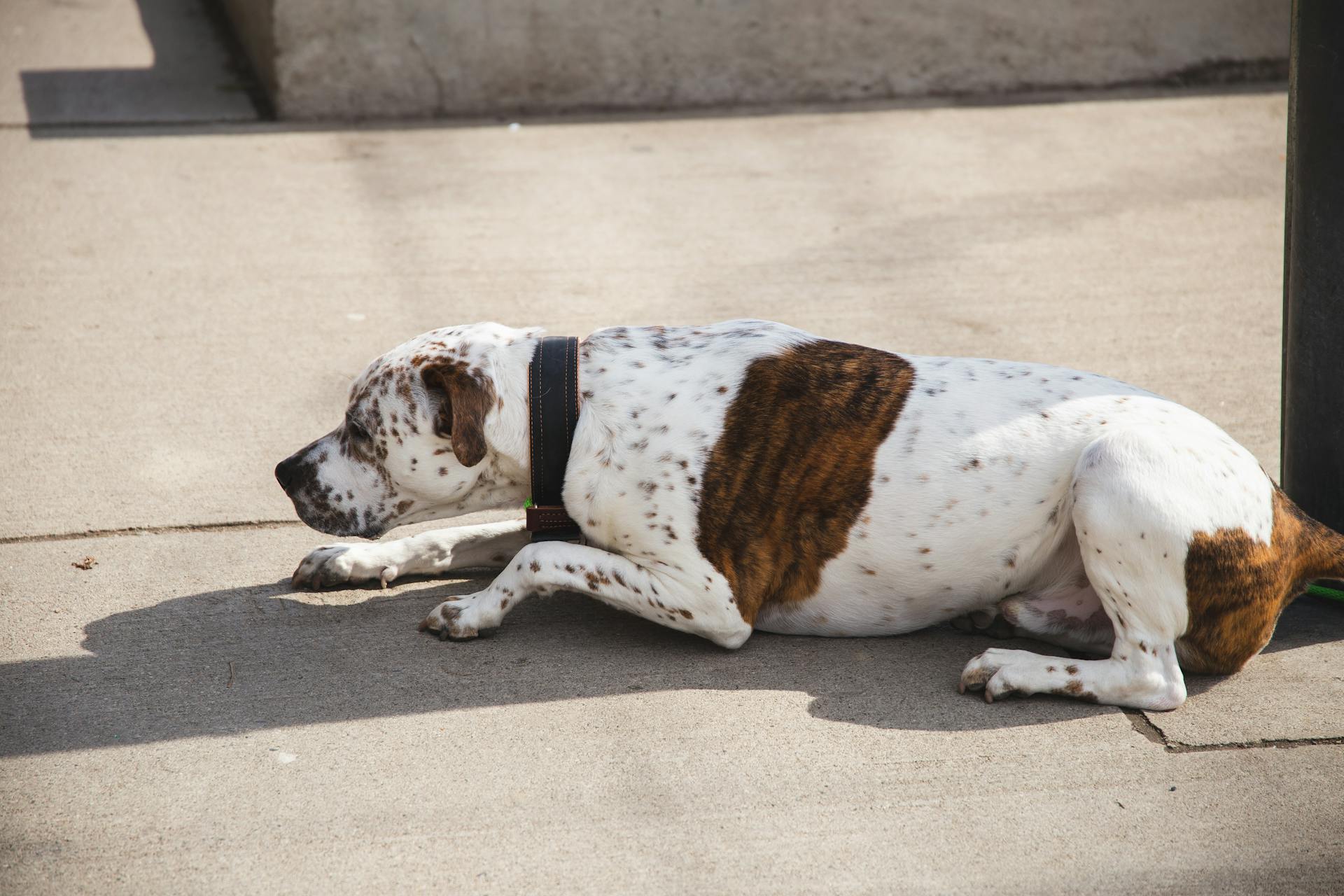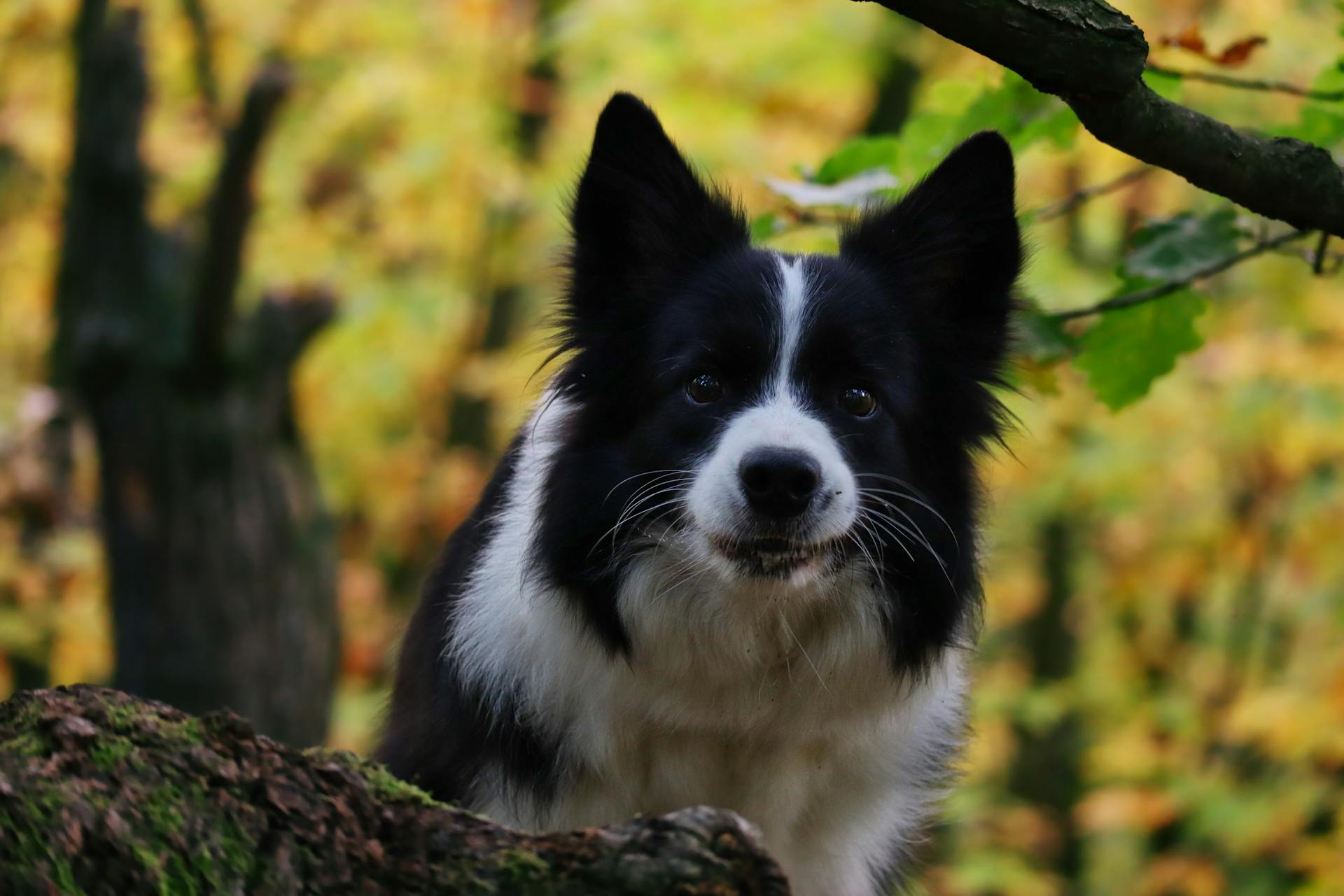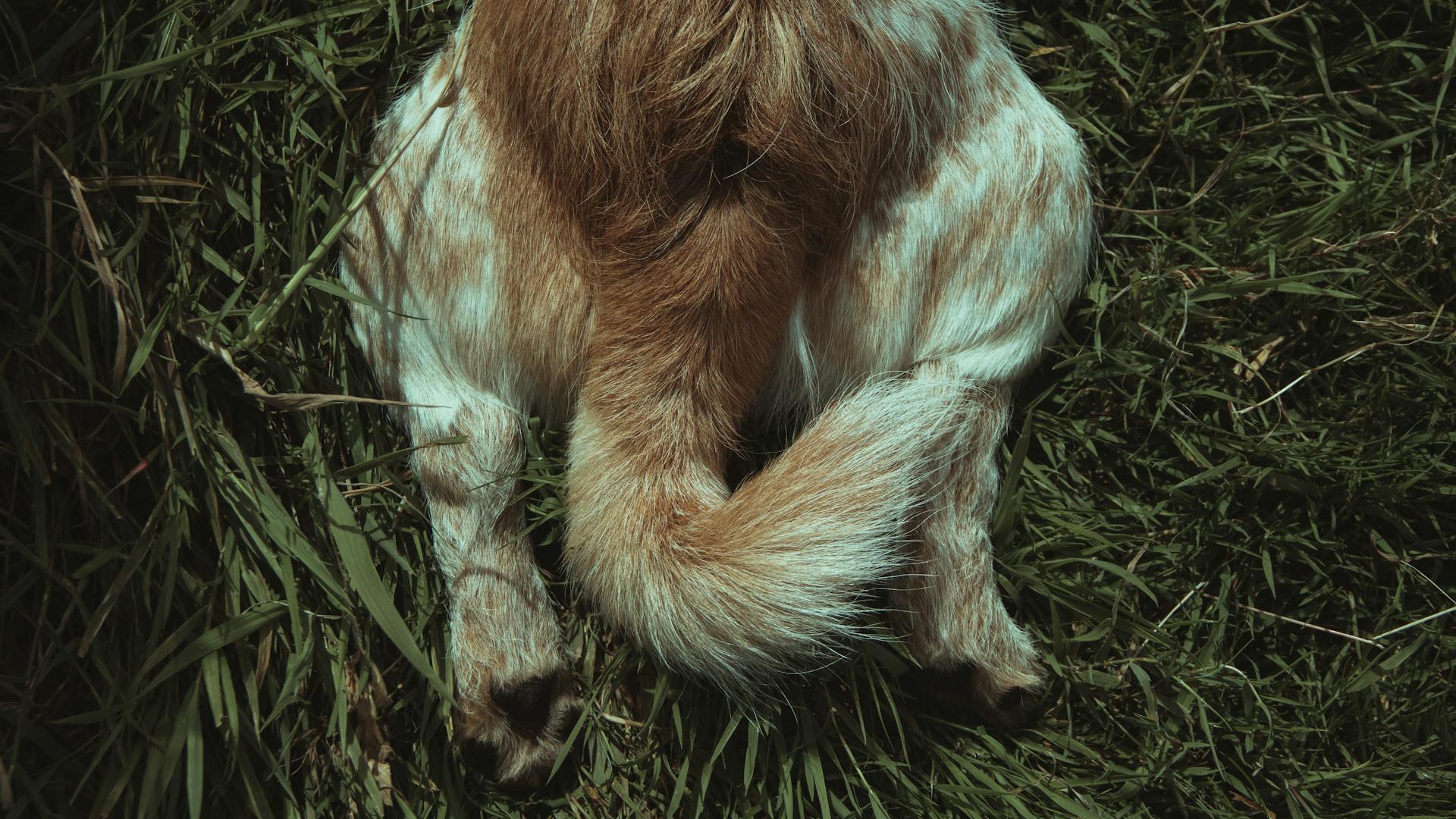
The Plott Walker Hound is a unique breed that's a mix of the Plott Hound and the Walker Hound. They're often used for hunting small game.
This breed is known for its strong tracking ability, inherited from its Plott Hound parent. Their keen sense of smell helps them track scents that other dogs might miss.
Their short coats require minimal grooming, making them a low-maintenance pet. They're also relatively small, weighing between 40-60 pounds.
Characteristics
The Plott Walker Hound is a unique breed with a distinct temperament. They are devoted and protective of their family, but can be wary of strangers.
Their energy level is high, which is reflected in their love of active lifestyles. They require regular exercise to keep them happy and healthy.
Plott Walker Hounds are intelligent and trainable, but they can be stubborn at times. They have a strong prey drive, so it's essential to socialize them well to prevent them from viewing smaller household pets as prey.
Here's a breakdown of their temperament traits:
Distinctive Physical Traits
The Plott Hound's coat is truly striking, with a fine and glossy texture that's just as impressive as it is functional.
Their coat comes in multiple shades of brindle, making each dog a unique and beautiful individual.
The Plott Hound's coat is actually thick enough to offer protection against the elements when hunting, which is a testament to its durability and practicality.
They can be any shade of brindle, including yellow, buckskin, tan, brown, chocolate, liver, orange, red, light or dark gray, blue or Maltese, and black.
Their coat may also feature a solid black color, or any shade of brindle with a black saddle, and black with brindle trim.
A rare buckskin color is also possible, ranging from red fawn or light cream to dark fawn or golden tan.
Their standard color is brown brindle, but they can also be found in a wide range of brindle patterns, including red brindle, blue brindle, black brindle, golden brindle, and yellow brindle.
In addition to their brindle patterns, Plott Hounds can also be found in solid colors, such as black.
Discover more: Dark Brindle English Bulldog
Temperament & Intelligence
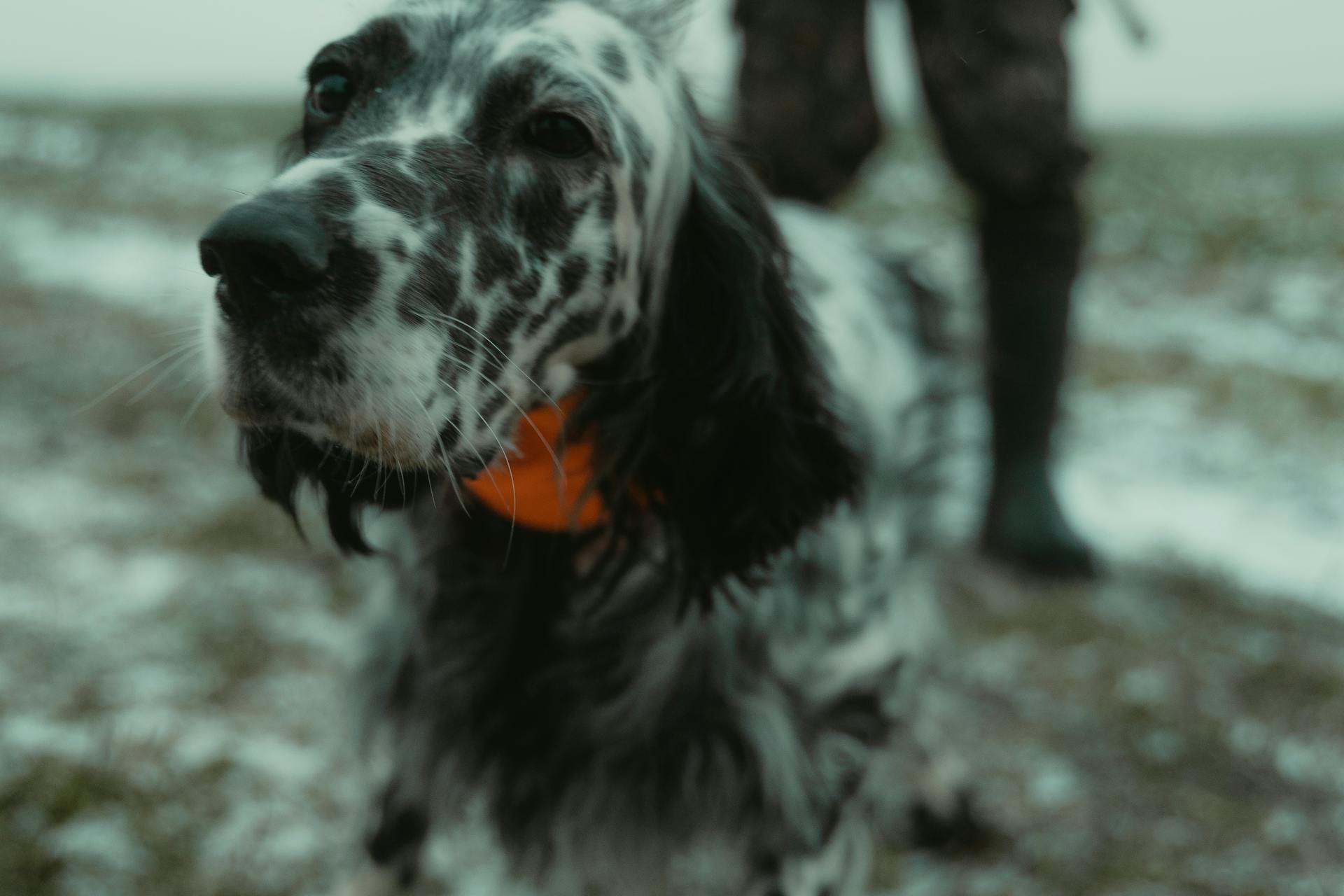
The Plott Hound's temperament is a unique blend of loyalty, courage, and independence. They are naturally wary of strangers and can be vocal, making them great watchdogs.
Their loyalty and love belong to their human family, and they are wonderful with children, lovingly guarding them from harm. However, they can be aloof to strangers and prefer to be the one to approach a stranger first.
Plott Hounds are eager to please, but they also have a stubborn and independent streak that can make training difficult. This means that trainers must be exactly correct in training for any new task, or the Plott will quickly master it and remember it forever.
Their high energy level and strong prey drive can make them view smaller household pets as prey, so proper socialization is crucial to ensure they get along with other animals. With proper training and socialization, they can be great companions for active families.
Here's a breakdown of the Plott Hound's temperament and intelligence:
Overall, the Plott Hound's unique temperament and intelligence make them a rewarding companion for active families, but they do require proper training, socialization, and attention to their needs.
Quick Facts
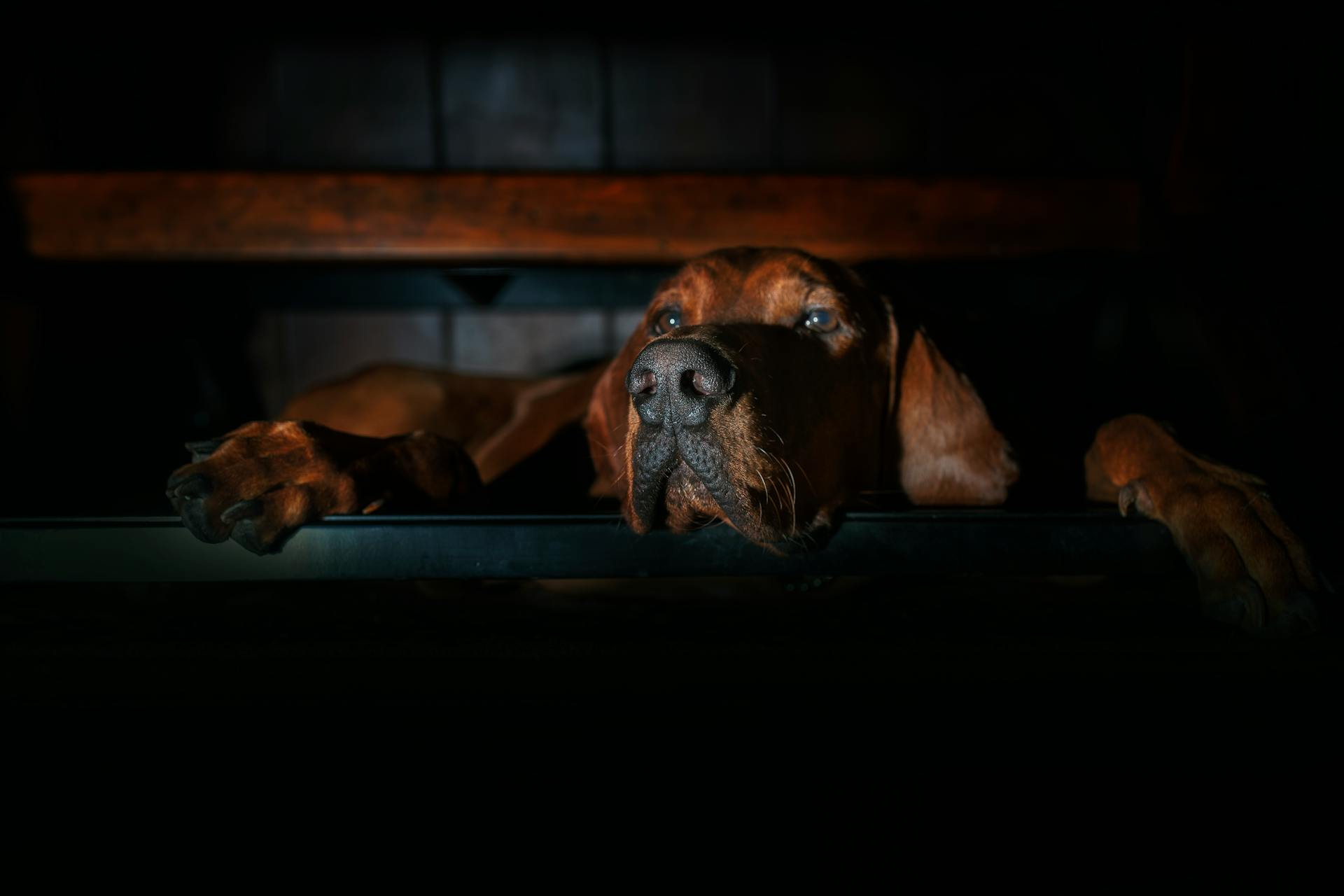
The United States is the origin of this breed. The breed group is Hound, which is a great category for an energetic and intelligent dog.
This breed has a medium to large size, which means it needs plenty of space to run around. A short, dense, and glossy coat is what you can expect, making grooming a breeze.
With a lifespan of 10-14 years, you've got a loyal companion for a long time. They're friendly, so you can bet they'll be great with family and friends.
Their high exercise requirements mean they need regular vigorous exercise and mental stimulation. This can be achieved through activities like running, hiking, or even just a game of fetch in the backyard.
Their intelligence is a double-edged sword - they're easy to train, but can be independent if you don't use positive reinforcement training methods. Regular brushing to remove loose hair is usually all you need to keep their coat looking great.
Here are some key stats to keep in mind:
- Origin: United States
- Size: Medium to Large
- Lifespan: 10-14 years
- Exercise Needs: High exercise requirements
- Training: Intelligent but can be independent
- Grooming: Low-maintenance coat
Natural Bear Hunters
Plott Hounds are natural bear hunters, thanks to their fearless attitude and pinpoint-accurate nose.
They have all the traits you want in a big game dog, including intelligence and loyalty.
Plott Hounds were some of the best bear-hunting dogs on the East Coast, specifically in the North Carolinian mountains.
They still make excellent hunting dogs to this day, with their natural ability to track and hunt big game.
Their stunning looks don't hurt either - they're gorgeous dogs that are as beautiful as they are talented.
See what others are reading: Game Bred American Pit Bull Terrier
Health and Grooming
Plott hounds are smart and energetic, which means they need lots of daily activity to be happy and well-adjusted.
Their grooming requirements are basic, with a short coat that stays relatively clean and only needs basic grooming.
You'll need to brush your Plott hound weekly with a soft-bristle brush or grooming mitt to remove loose fur and distribute skin oils.
Shedding can increase seasonally, often in the spring and fall, during which you'll have to brush more frequently to keep up with the loose fur.
Bathe your Plott hound every month or so, depending on how dirty they get, but be sure to check their ears at least weekly to see whether they need cleaning.
Dry the ears well whenever they get wet, and check their nails roughly once a month to see whether they're due for a trim.
Aim to brush their teeth every day with a canine toothpaste to maintain good dental hygiene, which is important for their overall long-term health.
Reputable breeders are committed to breeding healthy, well-socialized puppies that will make great companions, and will screen their breeding stock for health problems.
Regularly inspect and clean your Plott hound's ears with a dog-specific ear cleaning solution, especially their pendant ears which are prone to ear infections.
Using a gentle dog shampoo to give them a good bath every 6 weeks or as needed is a good idea, but be careful not to over-wash them, as too much soap can strip their natural skin oils and dull their fur.
See what others are reading: Bull Terrier Types
Exercise and Training
Plott Hounds need at least an hour of exercise every day to stay happy and healthy. This can be broken up into walks or trips outside as you want, but try to keep to an hour or more each day.
Without enough exercise, Plott Hounds are likely to vent their frustrations with destructive behaviors, like chewing or digging. They will let you know if they're not getting enough physical activity!
A bored Plott Hound without an outlet for their energy might become destructive or engage in other undesirable behaviors. Long walks, running, cycling, and play sessions are great ways to burn some of this breed's energy.
Plott Hounds can be challenging to train because they're independently minded and love to go off on their own adventures at the behest of their nose. They're wickedly intelligent and can easily run rings around unprepared dog owners.
Use positive reinforcement during your early training sessions to lay an easily understood groundwork for your Plott Hound. This means showering them with praise, belly scratches, and treats when they respond to their name or behave calmly.
Firm, patient training with clear boundaries and a no-nonsense attitude work best for this breed rather than a more easygoing and permissive style. Avoid scolding your Plott Hound, as they act tough but are sensitive to harsh words and punishments.
For your interest: When Is National Boston Terrier Day
Exercise
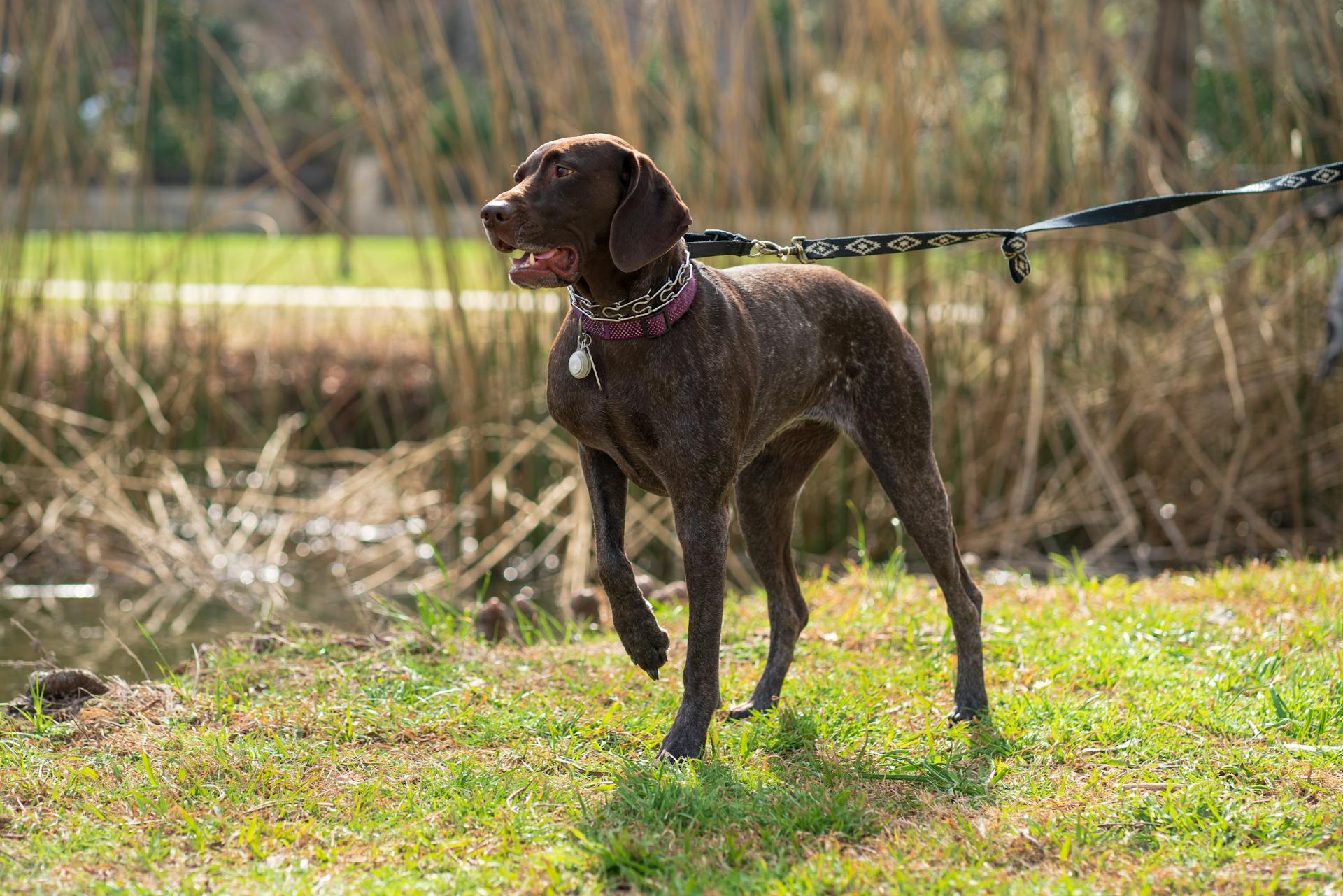
Exercise is crucial for Plott hounds, requiring at least an hour of vigorous activity every day. This can be broken up into walks, runs, or play sessions in a securely fenced area.
A bored Plott hound can become destructive or engage in undesirable behaviors, so it's essential to provide an outlet for their energy. Long walks, running, cycling, and play sessions are great ways to burn off some of this breed's energy.
Puzzle toys can also provide mental stimulation, keeping your Plott hound engaged and challenged. Make sure to keep your Plott hound on a leash or in a securely fenced area when outdoors, as their high prey drive can cause them to take off running after perceived prey.
Plott hounds are avid runners and love exploring nature, making them perfect for outdoor activities like hiking or biking with your dog. They also enjoy playing scent games, which engage their nose and provide mental stimulation.
Without enough exercise, Plott hounds are likely to vent their frustrations with destructive behaviors, like chewing or digging. So, make sure to schedule regular exercise sessions and provide plenty of opportunities for physical and mental activity.
For another approach, see: Running Walker Hound
Training

Training your Plott Hound requires patience and consistency. Start training and socialization early, ideally when your dog is a puppy, to prevent bad habits from forming.
Positive reinforcement training methods are a must, using treats and praise to encourage good behavior. Keep training sessions fun and varied to hold your dog's attention.
Plott Hounds can be challenging to train due to their independently minded nature, so be careful not to let them run rings around you. Firm, patient training with clear boundaries and a no-nonsense attitude work best for this breed.
Use positive reinforcement during early training sessions, showering your dog with praise, belly scratches, and treats when they respond to their name. Ignore bad behavior, like tugging or barking on the leash, and reward calm behavior instead.
Scolding your Plott Hound can be counter-productive, as they're sensitive to harsh words and punishments. Avoid punishment altogether, and focus on building a positive association with good behavior.
Socialization is crucial for Plott Hounds, who can be suspicious of strangers and new situations. Start by exposing your dog to new places, animals, and people, and prioritize positive reinforcement to help them feel more confident.
Related reading: Breeds of Dogs That Start with H
Nutrition
Always have fresh water accessible for your Plott Hound.
Feed your Plott Hound two measured meals per day to ensure they're getting the proper amount.
A high-quality diet with balanced nutrition is essential for your Plott Hound's overall health.
Start with a top-notch dry food with protein content between 18% to 22% for an adult Plott Hound.
Puppies need 25% to 30% protein to fuel their growing bodies.
You can feed your Plott Hound some meat every day to boost their protein intake.
Lean chicken, lamb, turkey, and beef are all great options for your Plott Hound.
Raw diets are also popular among Plott owners, so don't be afraid to consider this option.
Add some fiber-rich veggies to your dog's meals in small portions, such as sweet potatoes, green beans, and carrots.
Fruits like apples, watermelon, blueberries, strawberries, mango, peaches, pears, and blackberries can be served sparingly due to their sugar content.
Ask your vet and do your research before offering new foods to your dog.
Monitor the amount of food and treats you give your Plott Hound to avoid having them become overweight, especially as they age.
Health and Wellbeing
Finding a reputable breeder is crucial when bringing a Plott Walker Hound into your life, as they are committed to breeding healthy, well-socialized puppies that will make great companions.
Plott Walker Hounds are a generally healthy breed with few major health problems, but they can be prone to certain health issues. Ear infections are common in this breed due to their pendant ears, so regular ear cleaning is essential.
Bloat, also known as gastric torsion, is a life-threatening condition that can occur in deep-chested dogs like Plott Walker Hounds. This happens when a dog's stomach fills with gas and twists.
Dysplasia is another potential issue, particularly in big and active breeds like the Plott Walker Hound. Limiting strenuous exercise during adolescence can help prevent this painful and arthritic condition.
To keep your Plott Walker Hound healthy, it's essential to stay on top of regular ear cleaning and provide a balanced lifestyle that includes moderate exercise.
A unique perspective: What Is the Average Lifespan of a Pug Dog
Family and Socialization
Plott Hounds can be a good fit for active families who have experience owning dogs or are willing to learn. They're very affectionate and mellow toward their family, but with an intense loyalty that makes them a fantastic watchdog.
Supervision is crucial if you have young children, as Plott Hounds can get a little snappish. Early socialization is also key to helping the Plott Hound feel more secure and teaching them the boundaries of proper interaction with kids.
Plott Hounds usually do best with other dogs, but their strong prey drive means they may chase cats or smaller pets.
Suitability of Dogs for Families
Plott Hounds can be a good fit for active families with experience owning dogs or a willingness to learn.
They are very affectionate and mellow toward their family, but with an intense loyalty that makes them a fantastic watchdog.
Supervision is recommended if you have young children because Plott Hounds can get a little snappish.
Early socialization is crucial to helping the Plott Hound feel more secure and to teach them the boundaries of proper interaction with kids.
A little patience and effort can go a long way in creating a harmonious household with a Plott Hound.
Getting Along with Other Pets
Getting Along with Other Pets can be a challenge, especially with breeds that have a strong prey drive like Plott Hounds. Their instinct to chase cats or smaller pets is very strong.
Early socialization is key to helping Plott Hounds get along with other pets. This means introducing them to other animals from puppyhood, especially if you're planning to have multiple pets in the household.
Supervision is crucial when introducing a Plott Hound to other pets, as their strong prey drive can lead to mishaps if left unchecked.
Curious to learn more? Check out: Pit Bulls as Pets
Puppies and Ownership
Finding a Plott Hound puppy can be a challenge, but it's worth the effort. You can search social media for groups devoted to Plott Hounds, or check the AKC marketplace to connect with accredited breeders.
Be cautious when searching for breeders, as not all are created equal. Ethical and reputable breeders prioritize the health and well-being of their dogs, and their facilities should be clean and spacious.
Plott Hounds make wonderful family pets, especially with children. They are loving and loyal, and will guard their family from harm.
Readers also liked: American Bully Family Dog
AkC Acceptance Brings More Opportunities
The AKC acceptance of the Plott breed in 2006 opened up a world of new opportunities for breeders and owners alike. This breed is truly a working dog at heart, with a strong desire to please its master and excel in various activities.
The Plott's intelligence and tractability make them trainable for anything, from field trials to agility, tracking, nose work, rally, obedience, and even dock diving. With the right training and socialization, a Plott can thrive in many different roles.
A Plott's love and loyalty belong to their human and family members, making them wonderful with children and loving guardians. They are naturally protective of their pack, but also gentle and loving.
The Plott's athletic ability is a result of their mountain dog heritage, with a strong gait and ample reach that allows them to traverse various terrains with ease and agility. Whether you're a seasoned athlete or just starting out, a Plott can keep up with you.
Puppies
Finding a Plott Hound puppy can be a challenge, as they're not a very popular breed.
You can search social media for groups devoted to them, and there are always a few to be found.
The AKC marketplace is another good resource, connecting you with accredited breeders from across the country.
Chewy's adoption network is also a possibility, where you can find Plott Hounds of all ages and backgrounds.
Good breeders aren't hard to find, but they can be tricky to distinguish from shady breeders at first glance.
Ethical and reputable breeders have stringent health standards for their dogs and maintain a clean, spacious environment for their puppies.
Buying from a dodgy puppy mill simply isn't worth the trouble.
Owning Essentials
Having a puppy means being prepared for a lifetime of love, loyalty, and expenses. The cost of owning a puppy can range from $1,000 to $2,000 in the first year alone.
Puppies need regular veterinary care, including vaccinations and check-ups, which can cost around $500 to $700 per year. They also need to be spayed or neutered to prevent unwanted breeding.
Discover more: How Much Does an Afghan Hound Cost
A puppy's diet can be a significant expense, with high-quality dog food costing around $50 to $75 per month. They also need regular grooming, which can cost around $30 to $60 per session.
In addition to these expenses, you'll also need to budget for toys, treats, and other supplies, which can add up to around $100 to $200 per month.
Curious to learn more? Check out: 4 Month Staffordshire Bull Terrier
Frequently Asked Questions
What breeds make up Plott Hound?
The Plott Hound is a cross between Hanoverian and Blevin (a black and tan hound) breeds. This unique combination of heritage breeds makes the Plott Hound a distinct and versatile hunting companion.
Featured Images: pexels.com

